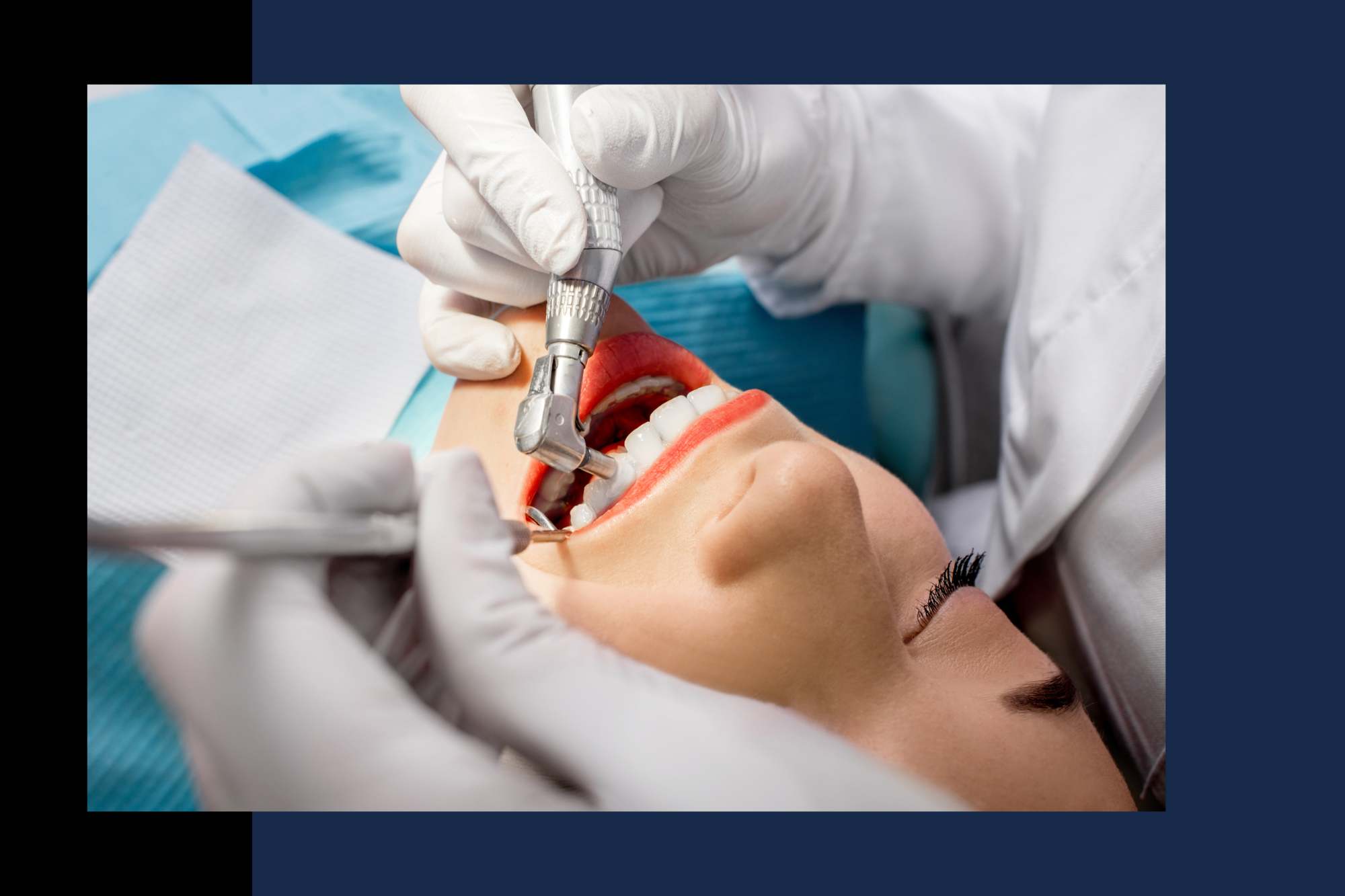SCHEDULE AN APPOINTMENT!
Do you have problems with your teeth? Are you in need of tooth filling? Tooth fillings are a great way to restore the health and look of your teeth. They help prevent cavities, protect the enamel from further damage, and can even enhance the appearance of your smile.
Whether you’re looking for a quick fix or want something more permanent, there are many different types of dental fillings available. From gold and silver amalgam, to composite resin, porcelain veneers and more, there’s a dental filling option out there that can help improve your oral health.
Tooth decay can be a common challenge, but our dedicated team is here to ensure it doesn’t hinder your daily life. Our tooth-filling services are designed to restore the integrity of your teeth, prevent further decay, and help you regain your confident smile.
With state-of-the-art equipment and our experienced dental professionals, you’re in trusted hands for this common, yet crucial dental procedure.
Understanding the Basics of Tooth Fillings
Tooth fillings are a safe and effective treatment option for cavities and tooth decay. Cavities form as a result of plaque accumulation, which progresses to damage the tooth’s structure. If left untreated, it can cause pain, infection, and even tooth loss. A tooth filling involves removing the decayed tooth material, cleaning the affected area, and filling the cavity with a tooth-colored composite, silver amalgam, gold, or porcelain.
At Keels Family & Cosmetic Dentistry, we prioritize patient comfort and long-term oral health. Our team of highly skilled dental professionals use the latest technology to detect tooth decay early, limiting the damage and providing efficient, virtually painless fillings. We use the highest quality materials for fillings, ensuring durability and promoting oral health.
In addition to technical excellence, we provide a patient-friendly environment to make your visit as comfortable as possible. We understand that dental procedures can be daunting, so we are committed to answering all your questions and addressing any concerns before proceeding. Trust us to keep your smile healthy and beautiful.

Different Types of Tooth Fillings We Can Help You With
If you’re considering getting a tooth filling, it’s important to understand the different types of fillings available so that you can make an informed decision. Each type has its own advantages and disadvantages, so it’s important to weigh all your options before making a decision.
Let’s take a closer look at the types of tooth fillings we provide:
Tooth Fillings (Silver Fillings or Dental Amalgam Fillings)
Dental amalgam fillings, commonly known as silver fillings, have been used for decades and remain a durable and cost-effective option. These fillings are made from a mixture of metals, including silver, tin, copper, and mercury. Despite concerns about mercury content, the American Dental Association (ADA) and other reputable health organizations have deemed amalgam fillings safe for most patients.
Amalgam fillings are known for their strength and resistance to wear, making them suitable for restoring cavities in molars and premolars. However, their metallic appearance can be less aesthetically pleasing than other options, which leads many patients to opt for alternative materials like composite or ceramic fillings.
Composite Fillings
Composite fillings, also called tooth-colored or white fillings, have gained popularity due to their natural appearance and versatility. Made from a blend of plastic and fine glass particles, composite fillings can be color-matched to the surrounding tooth, creating a seamless restoration that blends in with your smile.
One of the significant advantages of composite fillings is that they require less tooth structure removal compared to amalgam fillings, making them a conservative option for tooth restorations. Their bonding ability allows dentists to preserve more of the natural tooth, resulting in improved long-term dental health.
Ceramic Fillings (Porcelain Fillings or Inlays/Onlays)
Ceramic fillings are crafted from high-quality dental ceramics, providing an excellent aesthetic solution for tooth restoration. Unlike composite fillings, which are directly applied to the tooth and cured, ceramic fillings are fabricated in a dental laboratory and then bonded to the tooth.
These fillings are highly resistant to staining and can withstand considerable biting forces, making them suitable for both front and back teeth. Ceramic fillings offer superior durability and are an
Gold Fillings
Gold fillings, while not as common as they once were, remain a viable option for specific dental restorations. These fillings are composed of a gold alloy, which provides excellent strength and longevity. Gold fillings are well-tolerated by gum tissues and have a proven track record of durability, lasting for many years.
One of the significant advantages of gold fillings is that they require minimal tooth preparation, helping to preserve the tooth’s natural structure. However, their distinct gold color makes them more noticeable compared to tooth-colored fillings, which may be a concern for some patients.
Choosing the Right Tooth Filling
At Keels Family & Cosmetic Dentistry, we understand that each patient’s dental needs are unique. Our experienced dentists will conduct a thorough examination, consider your preferences, and recommend the most appropriate tooth-filling material for your specific case.
Whether you require a strong and durable amalgam filling for a molar or prefer a discreet and natural-looking composite or ceramic filling, you can trust our team to deliver outstanding results and restore your oral health to its optimal state.
The Procedure: What to Expect During a Tooth Filling
The tooth-filling procedure at our dental practice starts with an initial consultation. Our dentists will evaluate your oral health and the extent of the cavity or decay. To make sure you’re comfortable, we’ll apply a local anesthetic to numb the area around the tooth.
Using specialized dental tools, we’ll remove the decayed or damaged part of the tooth and thoroughly clean the affected area to prevent further decay.
Once the tooth is ready, we’ll apply the chosen filling material, layer by layer. Each layer is hardened with a special light before applying the next one. After the filling is in place, we’ll shape and polish it to match the surface of your tooth.
Rest assured, our staff at Keels Family & Cosmetic Dentistry is committed to ensuring the procedure is as painless and comfortable as possible. Post-procedure, we’ll provide you with detailed aftercare instructions to keep your filled tooth healthy and strong. Remember, regular check-ups are vital to maintaining good oral health.
Pricing
At Keels Family & Cosmetic Dentistry, we believe everyone deserves a radiant and healthy smile. Our tooth filling service aims to provide top-quality care that is not only effective but also affordable.
We understand the financial concerns associated with dental care, and have therefore priced our services competitively. We are committed to ensuring that our superior dental solutions are accessible to all.
Without revealing exact numbers, we can assure you that our pricing structure is designed with the utmost consideration for our patients’ budgets. With us, you don’t have to compromise your oral health due to cost concerns.
Aftercare and Recovery Post Tooth Filling
After undergoing a tooth-filling procedure at Keels Family & Cosmetic Dentistry, you may experience some minor discomfort, sensitivity, or soreness in the filled tooth and surrounding area. This is perfectly normal and subsides within a few hours or a couple of days. In order to expedite the recovery process and avoid complications, there are a few important aftercare guidelines to follow.
To begin with, refrain from eating until the numbness from the anesthesia has completely worn off to prevent biting your cheek or tongue.
When you do eat, opt for soft foods and avoid hot or cold beverages if your tooth is temporarily sensitive. Brush and floss your teeth as you usually would, but be gentle around the filled tooth to prevent dislodging the fresh filling. If you experience prolonged discomfort or pain, over-the-counter pain relievers can be used – unless otherwise directed by your dentist.
Remember, every individual’s recovery process is unique. If you have any concerns or if pain continues beyond a few days, please do not hesitate to contact us. Regular dental check-ups following your tooth filling are essential to ensure the filling is in place and your oral health is maintained. Our team at Keels Family & Cosmetic Dentistry is here to support you every step of the way on your journey to a healthier, brighter smile.
Ready to Begin Your Journey to a Healthier Smile?
Don’t let a toothache or dental discomfort stand in your way of achieving a brighter, healthier smile. At Keels Family & Cosmetic Dentistry, we’re ready to provide you with top-notch dental care tailored to your needs.
Don’t wait for your oral health to worsen – contact us today to schedule your appointment and let us help you maintain a beautiful and healthy smile. Your journey to optimum oral health is just a phone call away!
Why Choose Keels Family & Cosmetic Dentistry?
Make An Appointment
At Keels Family & Cosmetic Dentistry, we understand that people choose our practice for a multitude of reasons. Our prime location offers convenience to our valued patients, making it easy to schedule appointments and prioritize their oral health. The trust and satisfaction of our patients, who often refer friends and family, have solidified our reputation as a professional and caring dental office within our community. Our comprehensive services range from cosmetic dentistry to dental care for the entire family, ensuring that we meet the unique needs of every member. We work with various dental insurance plans to make quality care accessible. With flexible scheduling, a warm and welcoming atmosphere, state-of-the-art technology, and a commitment to patient education, we aim to provide not just dental services but also a comfortable and personalized experience. At Keels Family & Cosmetic Dentistry, we prioritize the health and well-being of our patients above all else, fostering a strong personal connection with each individual who walks through our doors.



